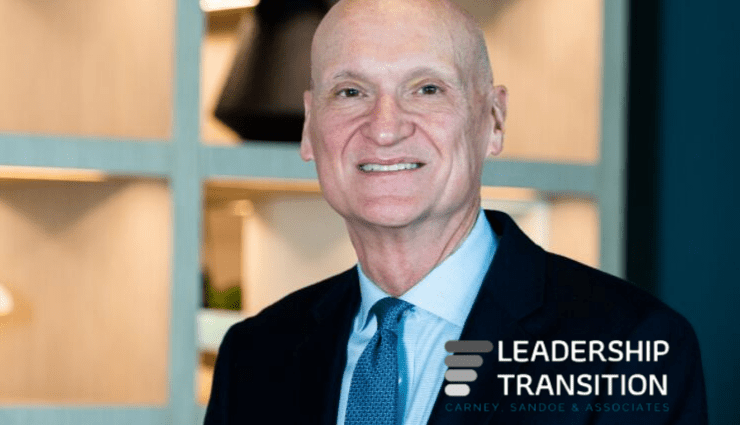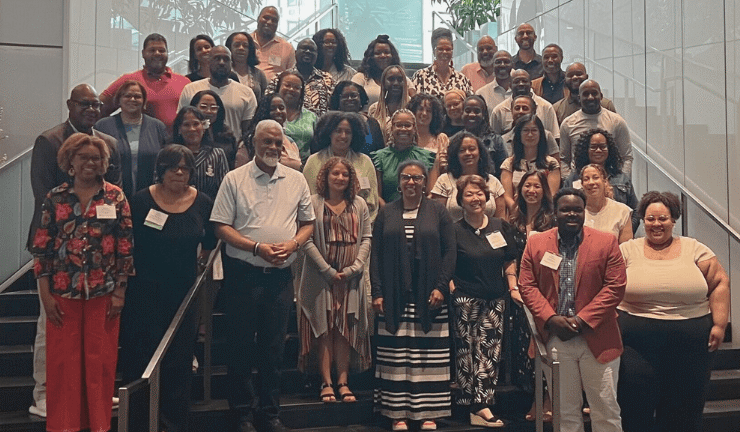Leading and Leaving: Getting it Right

This is a piece is from CS&A’s summer focus on leadership transition. Check out the full series here.
Leaving the headship position is a highly personal decision that has significant consequences for a school. What’s important for everyone involved is that the process be done right — for the departing, the head-elect, and the entire school community. The goal is to focus on the health and continuity of the school and its program and people.
The accepted best practice is for the head to give his or her current school as much notice as possible; some contracts call for a minimum of a year’s notice. When the decision has been communicated, the wheels are set in motion on several fronts, each of which demand attention and get underway all at once.
In June of this year, I stepped down from my position as head of Berkeley Carroll School in New York after 13 years. As the individual who was leaving, foremost on my mind at the start of the transition process were the following questions:
- What is the departing head’s role in the school’s transition to a new leader?
- How involved should the retiring (or departing) head be in the process?
- What are the most important messages about the transition for the school community to receive?
- How can we — the departing head, the board of trustees, the search committee, and the leadership team — best set up the incoming head for success?
I sat down with my board chair and vice-chair in September of 2017 to let them know that I thought my time at Berkeley Carroll was coming to an end. I told them that it was my intention to serve until June of 2019 at which point, I would have been head for 13 years. My time at the school had been so satisfying and fulfilling, but I felt the need for a change. I would not be seeking another headship. I deeply enjoyed my 34 years leading three different schools, but I felt the need for a work experience that would allow me to engage with and support the field of education in new ways.
Giving the board notice with an 18-month lead time allowed the board to formulate a transition plan at a comfortable pace. The chair, with input from other trustees, took the time from September until December of 2017 to interview search firms and select the one that they felt could work best within the school’s time frame. Working with the school’s communications department, we also settled on a process for the public announcement of my retirement and scheduled the announcement to go out in January of 2018. By that time, the board was well prepped and ready to respond to any questions from the school community. They were able to share an outline of the sequence of events that would occur to select my successor.
The school wanted to be able to appoint a new head by the summer of 2018, so the search committee — including board members, faculty, and members of the parent body — established an ambitious time schedule for winter and spring. Throughout the process, the chair of the search committee was extremely considerate in keeping me abreast of developments, often asking for my input on details regarding candidate visits and school operations (information he could relay to the candidates, as requested). By holding to the schedule, the school was able to identify quality candidates, work the list down to a few excellent finalists, make an offer, and then appoint the new head within the desired time frame.
Once my successor — the remarkable Dr. Lisa Yvette Waller, who came from The Dalton School where she served for 23 years — was chosen and had accepted the position, the focus shifted from identifying and hiring the right new leader to ensuring a successful transition process for her. So, the first communication we sent to the extended school community was the message that the selected candidate had our full support. To accomplish this, photos of Dr. Waller and I were taken the night of the board vote and sent out to the entire school community with a message in which I communicated my excitement about the selection and its impact on the future of the school. We noted that Dr. Waller was coming from The Dalton School where she served for 23 years, most recently as the associate head of school for progressive and inclusive practice, and that her experience and skills were ideal for leading the Berkeley Carroll into its next iteration. (For more detail, see the school’s announcement of her impressive accomplishments. It’s also an example of how a school can communicate excitement for and confidence in the head-elect.)
While I had met Dr. Waller during the search process, we did not know one another beforehand, so we set to work on building a relationship. Our families had dinner together. We initiated regular phone calls and meetings at the school. The board also undertook a series of dinners and conversations with Dr. Waller so that they could establish a good working relationship with her. My goal during this time was to keep her informed of the important events at the school so there would be no surprises when she stepped into the role full time on July 1.
This was especially important because Dr. Waller was coming to a school that had never been stronger. At Berkeley Carroll, enrollment was at an all-time high, finances were positive and robust, and the physical plant had been expanded and significantly upgraded. And because it is sometimes thought that following a successful head is more difficult than coming into a struggling school, it was important to all of us that we leverage the current strength of the school to create the foundation for the new head to be successful.
Having a full 18 months from when the announcement went public to when I stepped down gave the school ample time to take steps that would ensure the future success of the head-elect and keep the school thriving. It was crucial that teachers and administrators continued to be fully engaged in their classrooms and the community, and that during the transition, the work of the school continue as it always had. We owed it to our students and families to ensure that a change of personnel at the top would not take anything away from each member of the school having an excellent experience during the transition period and into the first year of new leadership.
Another important message we wanted to share with our community was that Dr. Waller was bringing her own strengths and valued experiences to the job and would find her own way of leading the school. For its part, the school needed to give her the freedom to establish herself and set the new course for the school. How business had been conducted in the past didn’t mean that it would or should continue in the same manner in the future.
In individual and group conversations, I shared this message by emphasizing that Dr. Waller needed the freedom and space to pursue the job in a way that suited her and that allowed her to fully utilize her particular skill set. I shared how refreshing and helpful it is to a school to have someone come in and ask thoughtful questions about existing policies and procedures and ascertain how they had been arrived at. It was important that the present success would not be seen as a yoke that kept the institution from continuing to undertake change and innovation. Good schools always want to get better!
Now having been through the process and having officially passed the reins, I see four major takeaways for all head transitions:
1. Equip the head-elect with whatever information she needs to hit the ground running, but don’t overwhelm her with too many details. New heads must be allowed space and time for their own investigation and to establish a path forward. A good transition team can help them fill in the details as needed. Mostly what the head-elect needs from everyone is to feel welcomed and supported.
2. Promote the fact that, regardless of loyalties or personal history, more often than not good things come down the pike with a change in leadership. Teachers and staff owe it to themselves and the students to embrace the possibilities and perspective a new leader brings to the community.
3. There is more than one way to be an effective leader. The board and transition team should ensure that the school community is primed and ready for a new era. With a unified commitment, the school can wind up a much better place!
4. It is possible for the new head to find his or her own way while implementing the mission of the school and respecting the culture of the community.
Remember, schools should be learning organizations! More than anything, a leadership transition is an opportunity for a school to examine ways it can both maintain its mission and yet grow and become stronger in the coming years.
Bob Vitalo a senior consultant with CS&A focusing on retained head of school searches, senior administrative searches, and strategic planning with boards and heads. With experience in elementary, single sex, religious, and K-12 schools, Bob works with a wide range of schools on their leadership needs. He has been a frequent presenter at NAIS, NYSAIS, NBOA, and CASE. He can be reached at bob.vitalo@carneysandoe.com.








